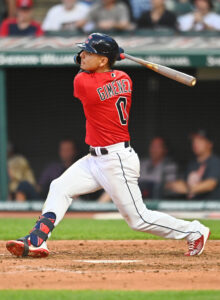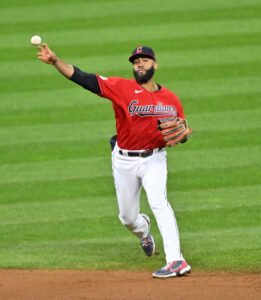Major League Baseball announced the Gold Glove winners tonight, as selected by a group of managers, coaches, and statistical analysis. Twenty-five percent of the selection total was determined by SABR’s Defensive Index metrics, while the other 75 percent was determined by votes from all 30 managers and up to six coaches from each team. Of the latter pool, managers and coaches were limited to voting on players in their own league, and they weren’t allowed to vote for any players on their own team. The utility Gold Glove wasn’t determined with any votes, but rather via a defensive formula calculated by SABR and Rawlings.
The list of winners…
- AL catcher: Jonah Heim (1st Gold Glove)….finalists: Alejandro Kirk, Adley Rutschman
- AL first base: Nathaniel Lowe (1st)….finalists: Ryan Mountcastle, Anthony Rizzo
- AL second base: Andres Gimenez (2nd)….finalists: Mauricio Dubon, Marcus Semien
- AL third base: Matt Chapman (4th)….finalists: Alex Bregman, Jose Ramirez
- AL shortstop: Anthony Volpe (1st)….finalists: Carlos Correa, Corey Seager
- AL left field: Steven Kwan (2nd)….finalists: Austin Hays, Daulton Varsho
- AL center field: Kevin Kiermaier (4th)….finalists: Luis Robert Jr., Julio Rodriguez
- AL right field: Adolis Garcia (1st)….finalists: Kyle Tucker, Alex Verdugo
- AL pitcher: Jose Berrios (1st)….finalists: Sonny Gray, Pablo Lopez
- AL utility: Mauricio Dubon (1st)….finalists: Zach McKinstry, Taylor Walls
- NL catcher: Gabriel Moreno (1st)….finalists: Patrick Bailey, J.T. Realmuto
- NL first base: Christian Walker (2nd)….finalists: Freddie Freeman, Carlos Santana
- NL second base: Nico Hoerner (1st)….finalists: Ha-Seong Kim, Bryson Stott
- NL third base: Ke’Bryan Hayes (1st)….finalists: Ryan McMahon, Austin Riley
- NL shortstop: Dansby Swanson (2nd)….finalists: Francisco Lindor, Ezequiel Tovar
- NL left field: Ian Happ (2nd)….finalists: David Peralta, Eddie Rosario
- NL center field: Brenton Doyle (1st)….finalists: Michael Harris II, Alek Thomas
- NL right field: Fernando Tatis Jr. (1st)….finalists: Mookie Betts, Lane Thomas
- NL pitcher: Zack Wheeler (1st)….finalists: Jesus Luzardo, Taijuan Walker
- NL utility: Ha-Seong Kim (1st)….finalists: Mookie Betts, Tommy Edman

 Giménez, 24, began his professional career by signing with the Mets as an international amateur out of Venezuela. As he rose up the minors, he became considered by many to be the top prospect in the organization and one of the best in the entire league. Baseball America had Giménez on its top 100 list in 2018, 2019 and 2021. He made his major league debut in the shortened 2020 season, getting into 49 games and hitting .263/.333/.398 for a wRC+ of 105.
Giménez, 24, began his professional career by signing with the Mets as an international amateur out of Venezuela. As he rose up the minors, he became considered by many to be the top prospect in the organization and one of the best in the entire league. Baseball America had Giménez on its top 100 list in 2018, 2019 and 2021. He made his major league debut in the shortened 2020 season, getting into 49 games and hitting .263/.333/.398 for a wRC+ of 105.